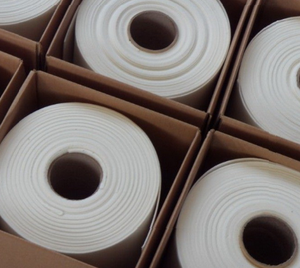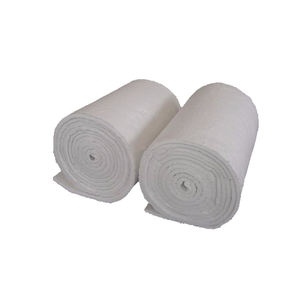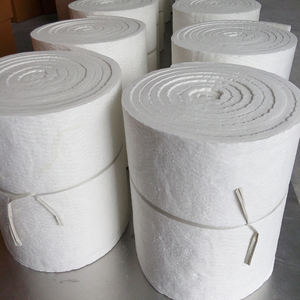Professional industry ceramic supplier, silicon nitride, silicon carbide, aluminum nitride and any other kinds of ceramics.
PRODUCT PARAMETERS
Description
Overview of 1600°C High-Temperature Alumina Fiber Bulk Ceramic Fiber Cotton
1600°C High-Temperature Alumina Fiber Bulk Ceramic Fiber Cotton is a lightweight, high-temperature insulation material composed primarily of alumina-silica. It is manufactured through a melting and spinning or blowing process, resulting in a flexible, wool-like textile. This material is engineered to provide exceptional thermal management, conserving energy and protecting equipment in extreme temperature environments across various industries.
Features of 1600°C High-Temperature Alumina Fiber Bulk Ceramic Fiber Cotton
-
Excellent Thermal Stability: Withstands continuous operating temperatures up to 1260°C (2300°F) and higher for certain grades, with minimal shrinkage.
-
Low Thermal Conductivity: Provides highly efficient insulation, reducing heat loss and improving energy efficiency.
-
Lightweight & Low Heat Storage: Offers low thermal mass, enabling rapid heat-up and cool-down cycles for improved process control and energy savings.
-
Thermal Shock Resistance: Highly resistant to damage from rapid temperature changes.
-
Excellent Flexibility & Resilience: Can be fabricated into blankets, boards, papers, and textiles to fit complex shapes and applications.
-
Good Chemical Stability: Resists attack from most corrosive agents, except strong alkalis and hydrofluoric acid.
Specification of 1600°C High-Temperature Alumina Fiber Bulk Ceramic Fiber Cotton
This alumina fiber bulk ceramic fiber cotton handles very high temperatures. It works well up to 1600°C. It stays strong and stable even at these extreme heats. This material keeps heat in very well. It has low thermal conductivity. This means it acts as a strong insulator. Less heat escapes. This saves energy. It also stores little heat itself. The material heats up fast. It cools down fast too. This helps control temperature changes quickly.
It is made mostly of alumina. This gives it good chemical resistance. It handles many corrosive environments. The fiber structure is flexible. It feels like cotton. You can pack it easily. You can layer it. You can shape it to fit different spaces. It is very light. It does not add much weight. This is useful in aerospace. It is useful in other places where weight matters.
People use this fiber cotton in many high-heat areas. It lines industrial furnaces. It lines kilns. It fits inside boilers. It works in heat treatment equipment. It insulates pipes carrying hot things. It protects sensitive parts in jet engines. It helps in lab equipment needing precise heat control. It insulates backup power systems.
The fibers are very fine. Handle this material carefully. Wear gloves. Wear a mask. Fibers can irritate skin. They can irritate lungs if you breathe them in. Keep the work area well-ventilated. Follow safety rules for handling. This keeps you safe. It keeps others safe.
Applications of 1600°C High-Temperature Alumina Fiber Bulk Ceramic Fiber Cotton
This alumina fiber bulk ceramic fiber cotton handles heat up to 1600°C. It’s made for very hot places. People use it for insulation. It keeps heat inside furnaces. It helps furnaces work better. It saves energy too. Factories put it in kilns firing ceramics. It lines the walls. This keeps the heat stable. Workers need stable heat for good products. Boilers also use this material. It wraps around hot pipes. This stops heat from escaping. Less heat loss means the boiler runs smoother. Foundries need it for metal melting. The fiber cotton goes into ladles holding molten metal. It keeps the metal hot longer. This is important for pouring. Power plants use it around turbines. Turbines get extremely hot. The insulation protects other parts nearby. Heat treatment ovens rely on it. These ovens harden metal parts. Consistent high temperatures are key. The fiber cotton makes sure temperatures stay even. Aerospace factories need high-temperature insulation. Jet engines produce intense heat. This material shields sensitive engine components. Chemical plants have hot reactors. They use the fiber cotton as insulation. It helps maintain reaction temperatures. It also protects workers from burns. Glass factories melt sand at high heat. The fiber cotton insulates the melting tanks. It keeps the molten glass liquid. This helps in shaping the glass later. It’s vital for energy savings everywhere.
Company Profile
Tanki New Materials Co.Ltd. focus on the research and development, production and sales of ceramic products, serving the electronics, ceramics, chemical and other industries. Since its establishment in 2015, the company has been committed to providing customers with the best products and services, and has become a leader in the industry through continuous technological innovation and strict quality management.
Our products includes but not limited to Aerogel, Aluminum Nitride, Aluminum Oxide, Boron Carbide, Boron Nitride, Ceramic Crucible, Ceramic Fiber, Quartz Product, Refractory Material, Silicon Carbide, Silicon Nitride, ect. please feel free to contact us.

Payment Methods
T/T, Western Union, Paypal, Credit Card etc.
Shipment Methods
By air, by sea, by express, as customers request.
5 FAQs of 1600°C High-Temperature Alumina Fiber Bulk Ceramic Fiber Cotton
What is 1600°C High-Temperature Alumina Fiber Bulk Ceramic Fiber Cotton?
This material is bulk insulation. It’s made from pure alumina fibers. These fibers are very fine. They form a cotton-like product. It handles extreme heat up to 1600°C.
Where is this material typically used?
It’s used in high-heat industrial settings. Examples are furnace linings, kiln linings, and boiler insulation. It works well for backing layers behind rigid boards. It’s good for filling gaps. It insulates pipes and vessels requiring top heat resistance.
Why choose this over other ceramic fibers?
This alumina fiber offers better temperature performance. Standard ceramic fibers often max out below 1500°C. This product withstands higher temperatures longer. It has excellent thermal stability. It resists shrinkage better at peak temperatures. This extends equipment life.
Is this material safe to handle?
Handle it carefully. Wear protective gear. Use gloves, masks, and goggles. The fibers are very fine. They can irritate skin and lungs. Good ventilation is essential. Follow all safety instructions provided. Keep the area clean during installation.
How well does it insulate?
It provides excellent thermal insulation. Its low thermal conductivity traps heat effectively. This significantly reduces energy loss. It saves heating costs. The bulk form fills complex shapes easily. It ensures complete coverage. It prevents heat leaks.
REQUEST A QUOTE
RELATED PRODUCTS

Customizable 1260°C thermal insulation ceramic fiber blanket for industrial furnaces

2-inch ceramic fiber board

Maximum Temperature 1800°C Polycrystalline Mullite Ceramic Fiber Sheet.

High-temperature insulation ceramic fiber shaped sheets

Ceramic Fiber Modules for Furnaces and Kilns



